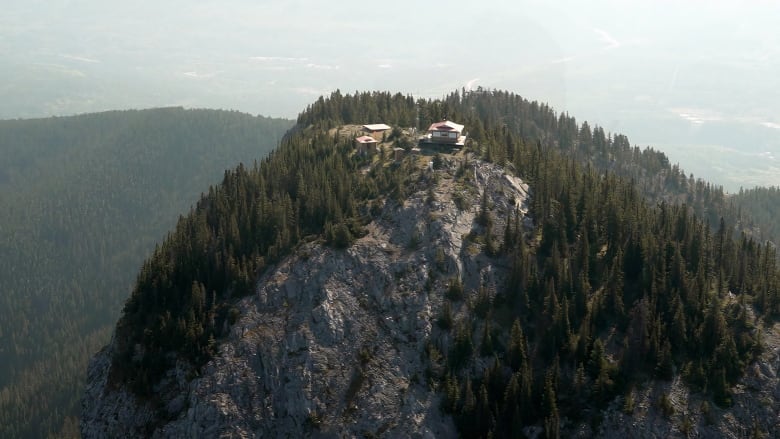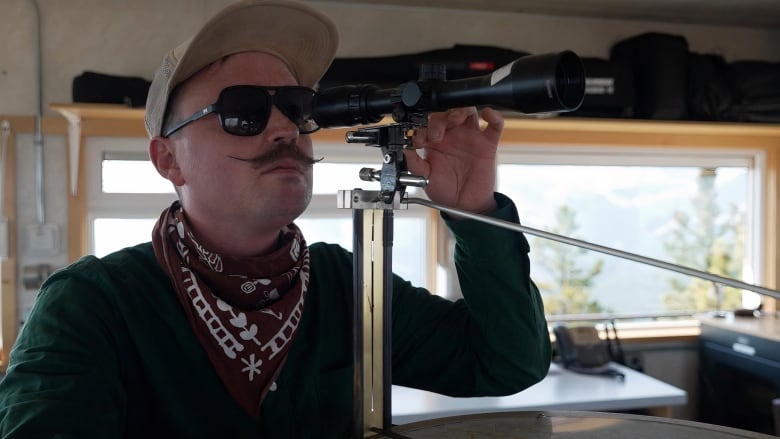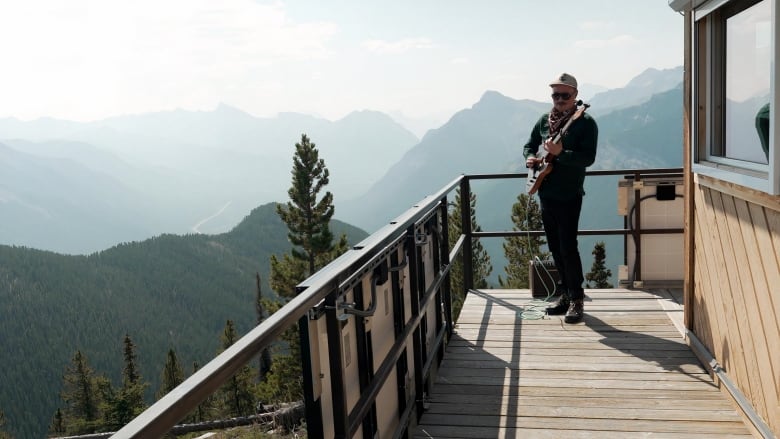
Shane Turner wakes up by 7:15 a.m. every morning. After he’s awake, the first thing he focuses on is examining the weather conditions in Kananaskis Country and sending out a report to the local forestry department.
Turner tries to answer several questions, such as how humid is it? Is it super windy? What is the temperature?
These factors help him determine the chances of a wildfire breaking out that day.
“[By measuring local conditions], we can assess the hazard level we’ll be on for the day,” Turner said.
“So if it’s soaking wet, 100 per cent humidity, there’s a good chance your day is going to be a little easier. It’s like a lifeguard job with no one in the pool.”
What does that mean? Well, if the local conditions look good, it’s likely there won’t be any wildfires in the area that day, and Turner may have a relatively easier shift as he scans his surroundings for any telltale signs of a fire, such as smoke.
He is a fire lookout, also known as a lookout observer, stationed in Kananaskis on top of Yates Mountain, Alta.

“This is my 10th season [as a lookout observer],” Turner said. “I did two seasons in High Level. I did three seasons in Whitecourt and this is my fifth season down here.”
Alberta has approximately 100 lookout stations — each location is equipped with a fire spotter who tries to identify new wildfires before they become a larger threat.
“We … cover 40 kilometres of land,” Turner said before adding, “Our job is to detect wildfires while they’re very small and get our crews in the air so that we can begin suppression before it reaches to hectares.”
How does it work? According to Turner, a fire lookout is usually deployed in a location “with the highest advantage to see the surrounding areas.” The goal is to aim for 40 kilometres’ worth of visibility in each direction.
Turner wasn’t always a fire lookout. He started his career as a musician, juggling multiple roles as a singer, drummer, bassist and songwriter.
He was drawn to the life of a fire spotter after he observed his brother-in-law at work.
“I just saw how relaxed my brother-in-law was and how much he loved it. And I just instantly knew I could do the job,” Turner said.
“It’s kind of one of those jobs that, you know if you’re that person … we tend to know that, yeah, alone in the woods is what I’ve been looking for.”

No distractions
Turner thinks that the interview process for the job is almost like a psychological evaluation.
Applicants can expect to answer questions like, “Can you stare [at the landscape] for 13 hours without getting bored?”
According to Turner, those with creative minds are likely to say yes because they know how to pass the time without getting bored.
“Most fire lookouts do have some cell reception, but they wanted to know that you could spend time away from being connected,” Turner said.
Distractions are a fire spotter’s worst enemy, according to Turner, who says it’s essential to stay focused and attentive.
“Your job is to be in tune with the land, watch the weather and just be aware so that when something happens, you already feel it coming,” he said.
“The more you’re thinking about the outside world, the less of a focused job you’re going to be able to do.”

Turner’s workdays are largely dependent on the weather — on moderate days with some precipitation, he’s able to stop work by 7:00 p.m. However, his days last longer when wildfire conditions are high.
He does a “complete scan of [the] land” every 15 minutes all day.
“Most fires are caught … just with your peripherals, corner of your eye,” Turner said.
“The scans do catch them if you happen to miss it the first time. But usually, most fires that we spot were like, ‘Oh, there it is.'”
Hard work is essential

Experienced fire spotters like Turner mostly rely on their eyesight to spot fires and only turn to binoculars in smoky conditions.
“Your eyes just pick up a smoke up to 40 kilometres away … the human eye is pretty amazing,” he said.
“We have this memory of the land and that’s why you become better and better at your job the longer you’re there. Because you look at the land every day, you know it, right?”
The job is more difficult than it might seem. Turner knows that he cannot avert his gaze from the landscape for too long especially when there’s a risk of a wildfire breaking out.
“It’s for hard workers, really, even though some people think they might just be sitting around doing [nothing],” he said.
“There’s a lot of work living in the woods, for one, maintaining things the best you can, and also just the long hours.”
Unique challenges
Anastasia Drummond, a wildfire information officer for the Calgary Forest Area, said that every lookout observer receives professional training and has access to online course material before they begin work.
They’re expected to get familiar with occupational health and safety, first-aid training and more. They must also acquire a radio operator’s license to be able to communicate with their peers on the job.
Turner’s current gig is five months long. Once a month or every three weeks, he gets a special delivery, namely his supply order that includes groceries, drinking water and, occasionally, presents.
“If you’re at one of the more isolated lookouts where you don’t see any humans, that’s your chance to get a handshake once a month from that pilot,” he said.
Drummond acknowledges that the role can be isolating for most.
“[A fire lookout] must be able to live in an isolated setting with minimal conveniences for up to six months of the year,” she said. “Given the role, they also need to be comfortable in small spaces for a long time.”

There are other challenges, such as rationing food and water. This means there’s no room for long, hot showers — Turner has to make do with sponge baths.
“You want to make sure you just always keep an inventory of how much rainwater you have,” he said.
“So when it rains, it gathers the rainwater from the roof down into here and then into my tank. You gotta use it sparingly if you haven’t had a lot of rain.”
His advice for new fire lookouts is simple — remind yourself that the challenging days won’t last.
“I tell new people, when you’re going through a tough day — and there are going to be tough days — there’s going to be long stretches where you’re waiting for that rain, call a [fire] lookout to vent,” he said.
“Don’t call your mom. She’s going to be worried about you.”
According to Turner, all lookout observers have one thing in common —- they are irrevocably in love with nature.
“We get a chance to live in the woods without the money or skill set to make that happen on their own. And we get to do it for half the year,” he said.
“It’s incredibly therapeutic just to be in tune with nature and watch the seasons change.”